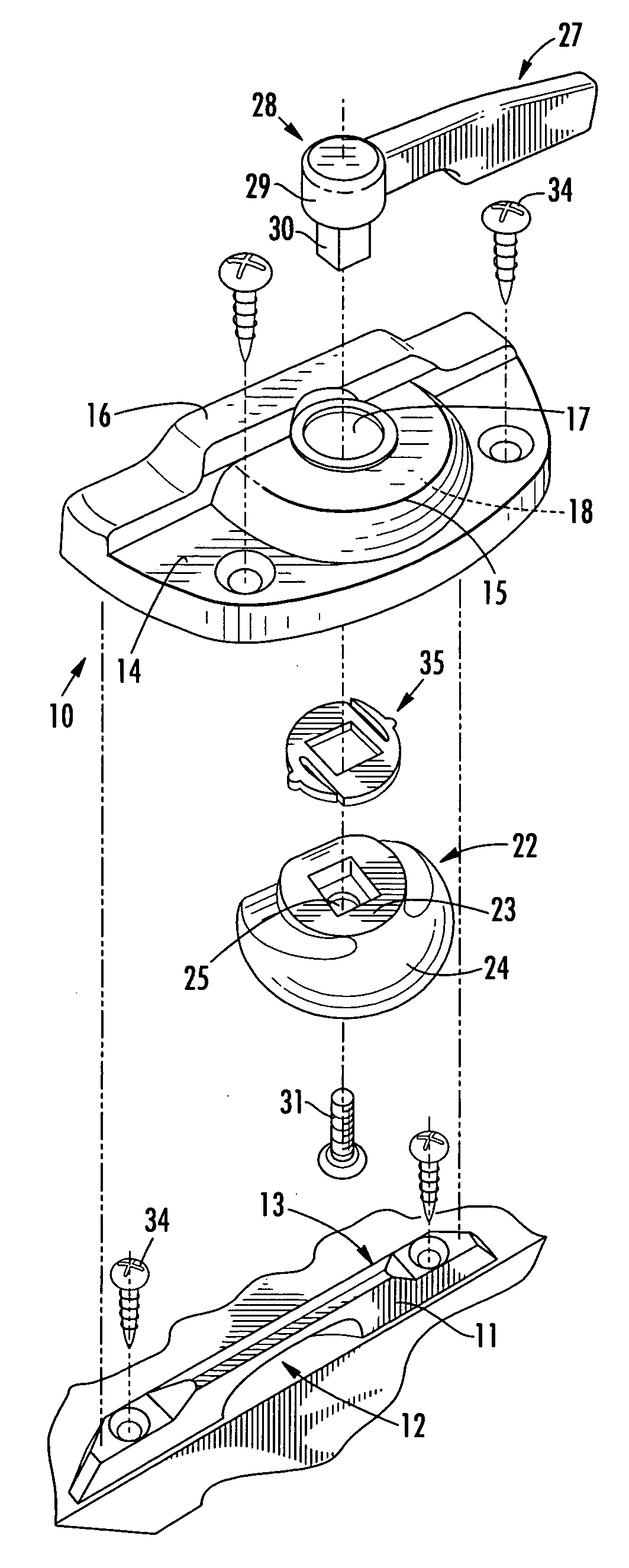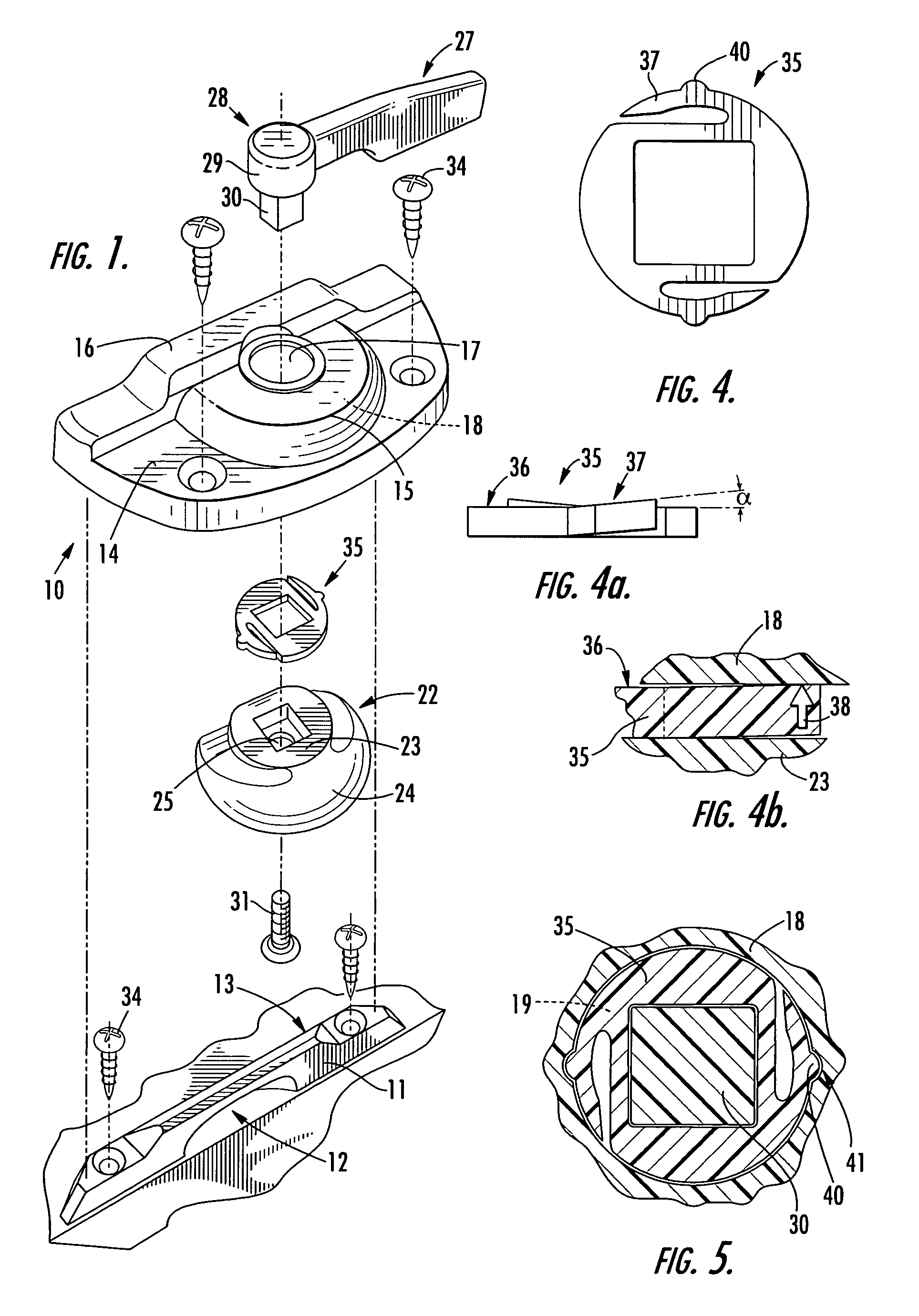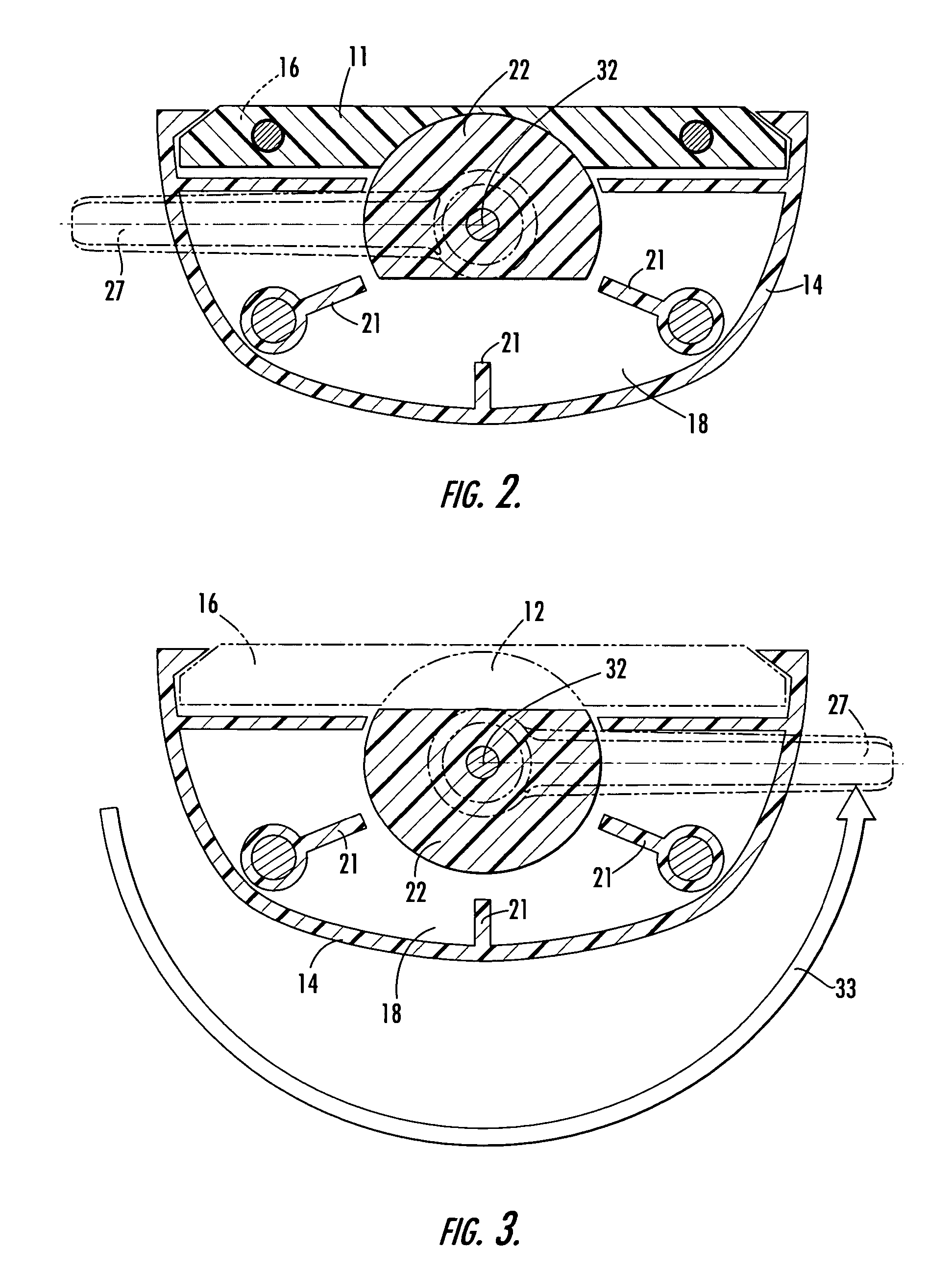Locking window device
a window locking and locking technology, applied in the direction of fastening means, mechanical devices, carpet fasteners, etc., can solve the problems of increasing the risk of damage to the cam, affecting the safety of the cam, and requiring exact alignment of the finished product in the current lock construction, so as to prevent unwanted movement of the cam, reduce the risk of damage, and reduce the effect of damag
- Summary
- Abstract
- Description
- Claims
- Application Information
AI Technical Summary
Benefits of technology
Problems solved by technology
Method used
Image
Examples
Embodiment Construction
[0023]Typical embodiments of the claimed invention are described in detail herein. It will be understood that the illustrations are for describing the typical embodiment of the invention and are not intended to limit the invention. Furthermore, such terms as “upward,”“downward,”“front,”“back,”“forward,”“rearward,”“top,”“bottom,” and the like are used for convenience and are not to be construed as limiting. Like numbers refer to like elements throughout the drawings and specification.
[0024]In one aspect, the invention is a locking device 10. Referring to FIG. 1, the locking device 10 includes a keeper 11 (or striker) defining an internal cavity 12, a housing 14 having an interior 18 that defines a keeper recess 16, and a cam 22 rotatively positioned within the housing 14. Rotative positioning of the cam 22 refers to the position of the cam relative to the internal cavity 12 of the keeper. The cam may be rotatively positioned between a locked position (FIG. 2) and an unlocked position...
PUM
 Login to View More
Login to View More Abstract
Description
Claims
Application Information
 Login to View More
Login to View More - R&D
- Intellectual Property
- Life Sciences
- Materials
- Tech Scout
- Unparalleled Data Quality
- Higher Quality Content
- 60% Fewer Hallucinations
Browse by: Latest US Patents, China's latest patents, Technical Efficacy Thesaurus, Application Domain, Technology Topic, Popular Technical Reports.
© 2025 PatSnap. All rights reserved.Legal|Privacy policy|Modern Slavery Act Transparency Statement|Sitemap|About US| Contact US: help@patsnap.com



